CO2 SCULPTURES
Sculpture in C02, mixed technique by Yann Toma in collaboration with Alain Bonneville
Created in 2009. Exhibited in 2011 at the Hotel Lutetia as part of the Saint Germain course and the FIAC and in Brussels Art Fair in 2011.
The CO2 sculptures are created in collaboration with Alain Bonneville, one of the world's leading specialists in CO2 treatment and current advisor to President Obama on CO2 burial.
The CO2 Sculpture is realized in the framework of a laboratory under the expertise of the artist Yann Toma and the earth geophysicist Alain Bonneville.
Realization
It requires the action of glass blowing and the integration of carbonate within the glass itself. After the implementation of the volume receptacle, a vacuum is placed and is followed by a complete filling by CO2. The object is then sealed by melting the glass and the CO2 is thus sequestered in a tight container simulating the rock reservoir. The carbonate, a real CO2 trap, deposited on the inner wall represents the ultimate step of the natural CO2 transformation process in the real conditions of geological storage.
Industrial scope
Conceived to accompany the general movement of CO2 burial that is underway for Western industries, the sculptural object exceeds the usual canons defined by art. Underneath the actual presence of the CO2 sculpture are obviously very large masses of CO2 that will be stored at a depth of over a thousand meters in considerable quantities.
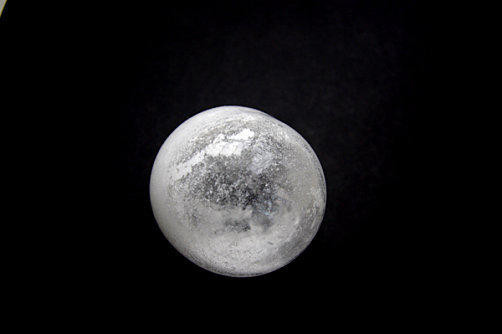


CARBON PEARL JEWELS
With Jean Grisoni
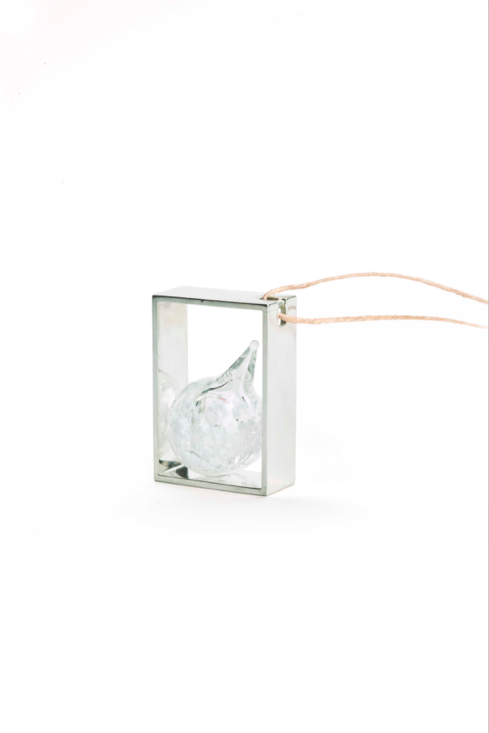



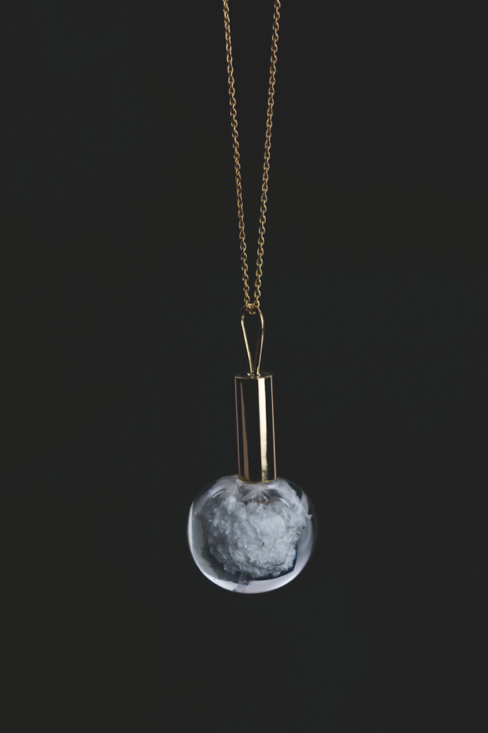
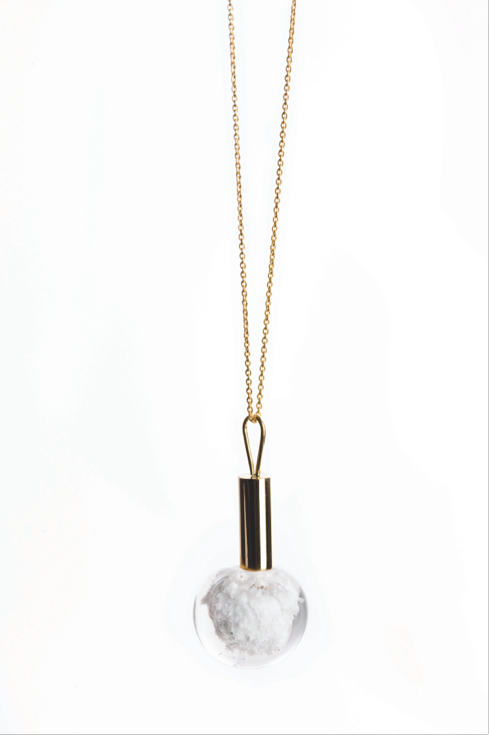

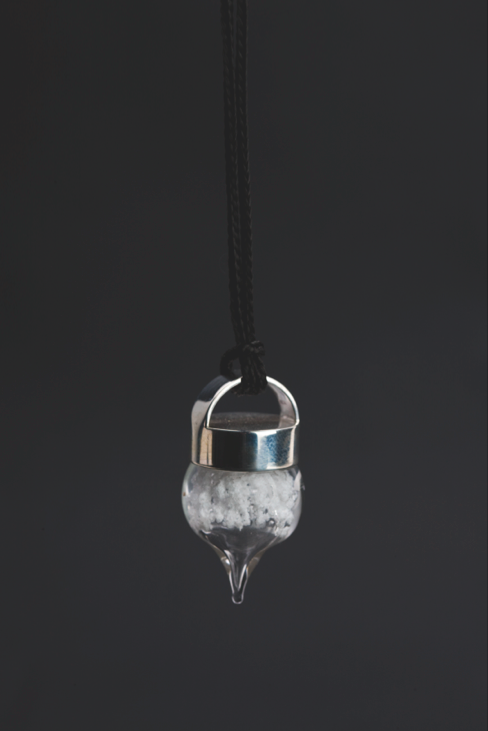
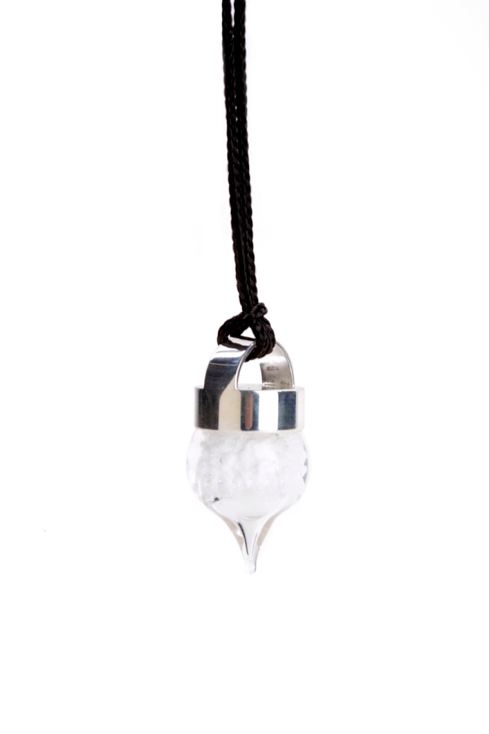
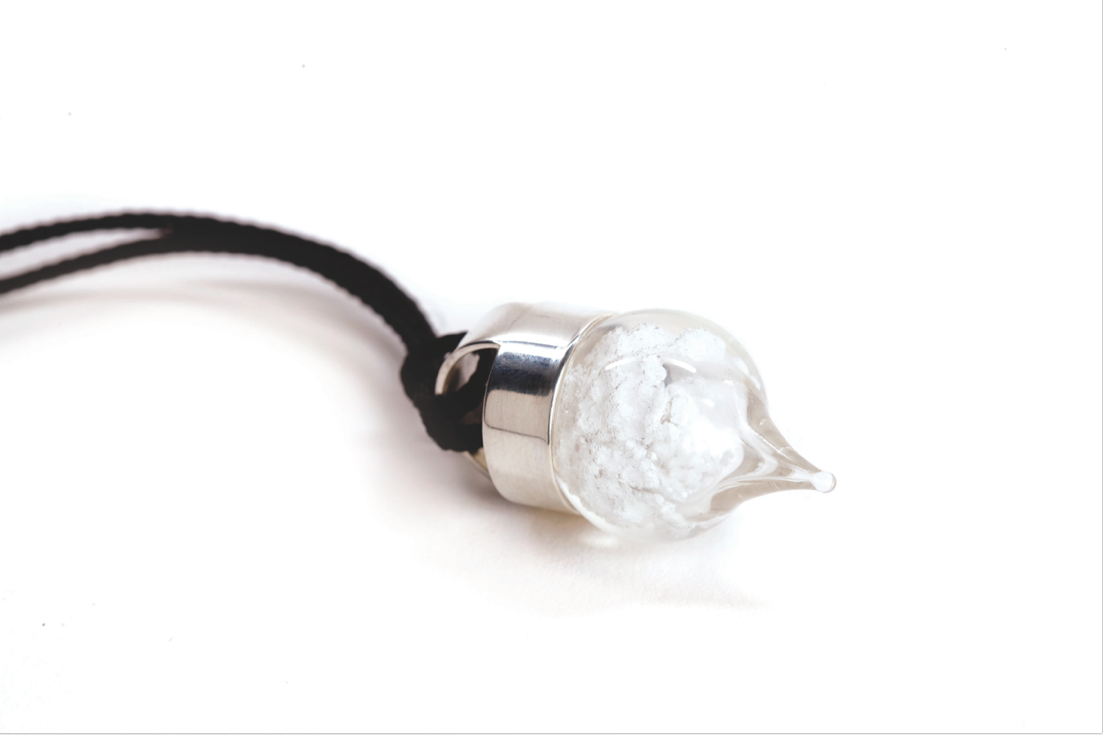
It is a circular form, a brilliant almost-moon open to the world and to each of us.It is a shining star, a poetic circumference, a pending dream, the time of natural repair.
JEWEL SCULPTURE/RECEPTACLE
The jewel is spherical, imperfect, human. It questions as much as it plays a role of containment of CO2. The result of a meeting between an artist and a jewellery designer, it represents in allegorical form the rocky reservoir where the ultimate transformation of this gas into a mineral, carbonate, stable over millions of years, will occur. This jewel is realized under the expertise of the earth geophysicist Alain Bonneville (official extension of the CO2 sculptures - 2009).
OUEST-LUMIERE
From their first meeting under the impulse of Kareen Russowsky, Yann Toma and Jean Grisoni decide to associate their imaginations around the CO2 jewel. The meeting ground is Ouest-Lumière, a vast territory of artistic experimentation which allows the meeting and the emergence of a factor N+1 of sublimation of reality. If different fields of operation reflect today the manifestations of Ouest-Lumière (Grand Palais, UNO in New York, etc.), it is above all an immaterial network patiently constituted, a network of production and diffusion of artistic energy.
CO2 CAPTURE AND STORAGE
Carbon capture and geological storage (CCS) is one of the most powerful weapons at our disposal to fight climate change. It involves capturing the CO2 (or carbon dioxide) emitted by fixed industrial installations (thermal power plants, steel factories, cement factories, etc.) and burying it in deep geological layers so that it remains there for several centuries or even several millennia. CO2 from this source represents nearly half of all CO2 emitted on the surface of the globe and acting on these sources will have significant consequences on the reduction of the concentration of CO2 in the atmosphere and therefore on global warming. The desired capture rate is 90%. Once the CO2 has been captured, it must be transported by pipeline or ship and then stored in deep geological layers, more than 800 m deep, where temperature and pressure conditions allow the CO2 to flow easily and to be stored in large quantities under optimal security conditions.
A NECESSARY CHANGE IN SOCIETY:
The development of CCS will only take place under certain conditions: 1) Public incentive and support mechanisms will be necessary for a thermal power plant to equip itself with a CCS device and remain competitive; 2) The legislative and regulatory context must be favorable and stable over several decades; 3) Research and development efforts must be pursued and increased to both reduce costs and strengthen the security of storage; 4) The acceptance of CCS by the population is an absolute necessity. CO2 sculptures will contribute in their own way to meeting this last condition.
REALIZATION
The "pearl" of the CO2 jewel is realized in a laboratory under the expertise of the artist Yann Toma and the earth geophysicist Alain Bonneville. It requires the action of glass blowing and the integration of carbonate within the glass itself. After the implementation of the receptacle volume, a vacuum is created and is followed by a complete filling with CO2. The object is then sealed by melting the glass and the CO2 is thus sequestered in a tight container simulating the rock reservoir. The carbonate, a real CO2 trap, deposited on the inner wall represents the ultimate step in the natural process of CO2 transformation in real geological storage conditions. The second phase of creation takes place in the mysterious workshops of Jean Grisoni. Here, the synergy of know-how engages the CO2 jewel in its formal/gold and silver concreteness. At the end of this magical place, the CO2 jewel is finally offered to the world.
LOGIC OF SHARING
The CO2 jewel introduces an intimate reflection as much as a unique one in itself, it presents itself above all as a form of energy in the making. This energy is as much the aesthetic framework it carries, an elegant mass of glass semi accessible because opacified by a thin layer of carbonate, as a mysterious form whose secret we would share, a secret whose function would not know if it would be revealed one day or if the function would be perhaps to account for the need to let nature take control. The aim would be to take part in a collective act of sharing, an act of recognition of our human condition, humble but also reactive because capable of correcting its errors and limiting the impact of its activities on the environment.
ARTISTIC AND CONCEPTUAL INSCRIPTION
The immediate reference to this work could be without any doubt that of the work of Marcel Duchamp "Air de Paris". Several parameters come to accredit this first impression, a conceptual impression that takes on a different meaning from the moment when the content, characterized as mysterious at the time, becomes a response to a real situation, that of the need to apply a retention of CO2 on the scale of our planet. "Air de Paris" was a pharmaceutical ampoule, a precious 50 cm3 ampoule of air from Paris emptied of its content and then re-sealed. The CO2 sculpture echoes the historical reality of this work and opens a new field of sharing. It was itself first put under vacuum and then filled with CO2 before being welded. Being in itself a deliberately informal and anthropomorphic form, it refers us as much to ourselves as to the condition of our planet.
Although structurally presented as a conceptual object, it calls for a local and deterritorialized take on the CO2 issue. By summoning the responsibility of CO2 wearers. The wearers of CO2 jewels become protectors of their own environment as well as guarantors of a shared work.
INDUSTRIAL SCOPE
Conceived to accompany the general movement of CO2 burial that is underway for Western industries, the sculptural object exceeds the usual canons defined by art. Underneath the actual presence of the CO2 jewel are obviously very important masses of CO2 that will be stored at a depth of over a thousand meters in considerable quantities.